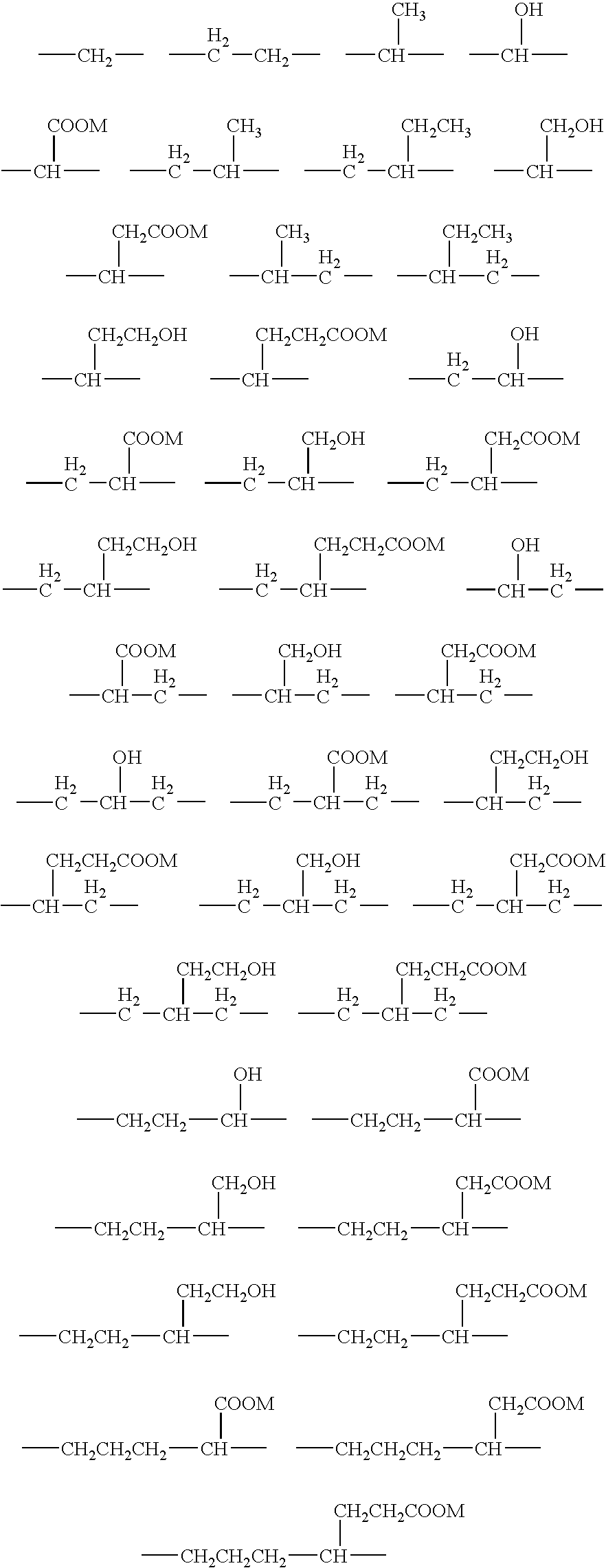Breaker and displacement fluid and method of use
a technology of displacement fluid and breaker, which is applied in the direction of sealing/packing, chemistry apparatus and processes, and well accessories, etc., can solve the problems of high initial and operational costs of oil-based drilling fluid and mud, significant torque and drag on the drill string, and high torque that must be applied to the drill string. , to achieve the effect of sufficient hydrostatic control
- Summary
- Abstract
- Description
- Claims
- Application Information
AI Technical Summary
Benefits of technology
Problems solved by technology
Method used
Image
Examples
example 1
[0053]A water based polymer drill-in fluid was formulated to contain: water (141.65 ppb); 11.2 ppg CaCl2 (pre-mixed with dry CaCl2) 251.42 ppb; Flo-V is Plus 0.75 ppb; FloTrol 7.00 ppb; magnesium oxide 1.50 ppb; sized calcium carbonate 30 ppb composed of Safe Carb 10 1.00 ppb; Safe Carb 20 2.00 ppb; Safe Carb 40 23.00 ppb; and, Safe Carb 250 4.00 ppb (commercially available from M-I, L.L.C. (Houston, Tex.). The polymer mud was heat-aged by hot rolling for 16 hours at 155° F. and exhibited the following properties, as shown in Table 1.
TABLE 1Heat aged @ 155° F. - 16 hrs Rheology at 120° F.600 RPM95300 RPM65200 RPM55100 RPM38 6 RPM10 3 RPM 8Gels 10″8 lbs / 100 ft2Gels 10′9 lbs / 100 ft2Plastic Viscosity30 cPYield Point35 lbs / 100 ft2
[0054]A filter cake built from the above water base polymer drill-in fluid was subjected to a modified High Temperature High Pressure (HTHP) filtration test. The HTHP Filtration test utilized a HTHP cell fitted with a fritted disk as a porous medium, on which t...
example 2
[0058]A water base polymer drill-in fluid, containing: water 315.00 ppb; Dry CaCl2 77.95 ppb; Flo-V is L 1.76 ppb; FloTrol 7.00 ppb; magnesium oxide 1.50 ppb; sized carbonate 30 ppb, was formulated and heat aged at 200° F. for 4 hrs and exhibited the following initial properties, as shown in Table 5.
TABLE 5Heat-aged @ 200° F. - 4 hrs-Rheology @ 120° F.600 RPM63300 RPM43200 RPM35100 RPM22 6 RPM5 3 RPM4Gels 10″6 lbs / 100 ft2Gels 10′20 lbs / 100 ft2Plastic Viscosity20 cPYield Point23 lbs / 100 ft2
[0059]The drill-in fluid was hot rolled at 155° F. for 16 hours and filter cakes built from the above water base polymer drill-in fluid were subjected to a modified High Temperature High Pressure (HTHP) filtration test. The HTHP Filtration test utilized a HTHP cell fitted with a fritted disk as a porous medium, on which the filter cake was built. In this example the filter cakes were built on a 35 microns disks. Upon application of 500 psi at 155° F. to the disk of the filter cake, effluent was col...
PUM
| Property | Measurement | Unit |
|---|---|---|
| weight percent | aaaaa | aaaaa |
| weight percent | aaaaa | aaaaa |
| weight percent | aaaaa | aaaaa |
Abstract
Description
Claims
Application Information
 Login to View More
Login to View More - R&D
- Intellectual Property
- Life Sciences
- Materials
- Tech Scout
- Unparalleled Data Quality
- Higher Quality Content
- 60% Fewer Hallucinations
Browse by: Latest US Patents, China's latest patents, Technical Efficacy Thesaurus, Application Domain, Technology Topic, Popular Technical Reports.
© 2025 PatSnap. All rights reserved.Legal|Privacy policy|Modern Slavery Act Transparency Statement|Sitemap|About US| Contact US: help@patsnap.com



